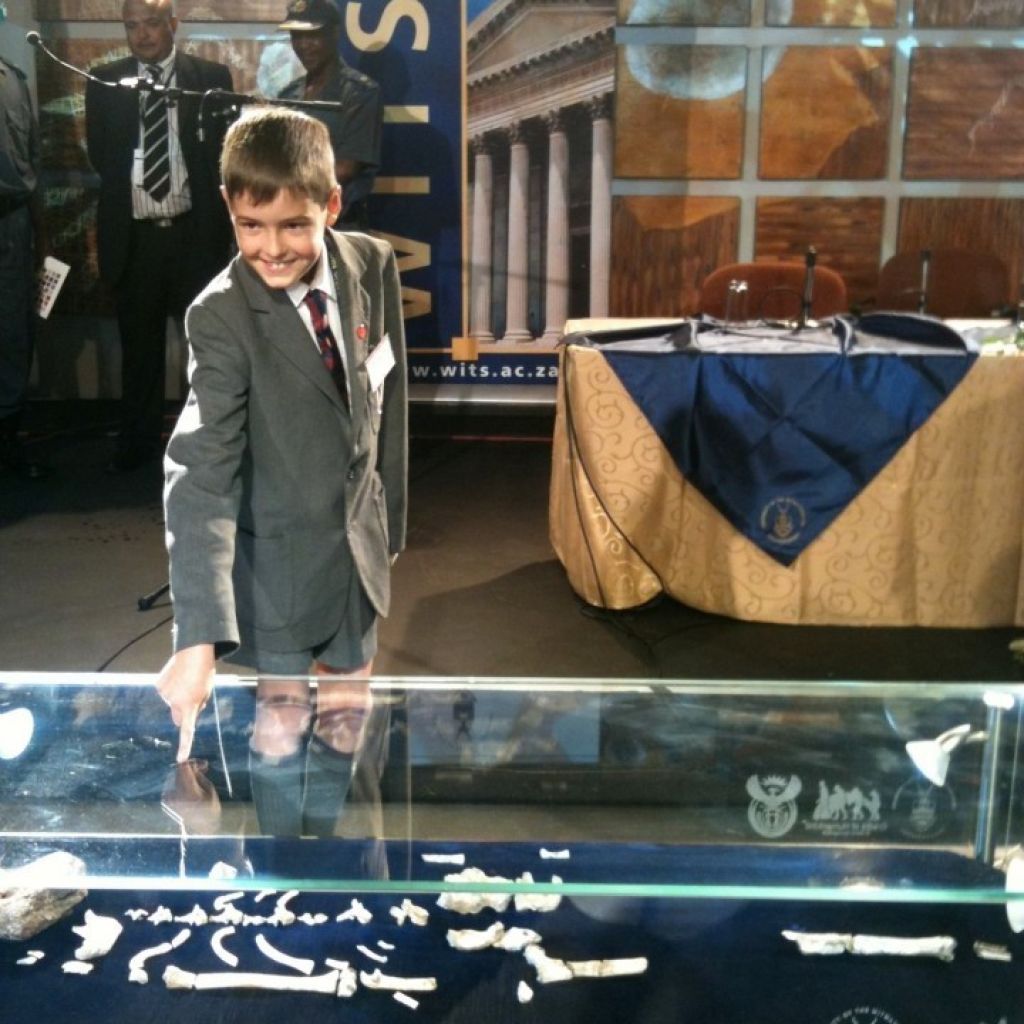New fossils take a trip to the Mother City and back

After their inaugural nine-day exhibition at Maropeng, the recently unveiled fossils of what’s been touted as a new species of hominid, which has been named Australopithecus sediba, have made their way to Cape Town and back again.
The fossils were unearthed by Wits University professor Lee Berger and his young son, Matthew, at the Malapa cave near Sterkfontein, in the Cradle of Humankind, in 2008.
Matthew Berger is credited with discovering the first pieces of the partial skeleton of a young boy at the Malapa site. Berger soon found the skeleton of an older female, which he believes could have been related to the boy. The scientist and his team are confident the two died together, or in relatively quick succession.
The discovery shed important light on the evolution of our own species, Homo sapiens; it appears to be a transitional form, which Berger argues may be the best yet found, between early australopithecines and early members of the genus Homo.
The sediba fossils could potentially replace other candidates, including Homo habilis, as our most distant direct ancestor.
On leaving Maropeng, the fossils went on show at the Iziko South African Museum in Cape Town, from April 21 to 24. They formed part of a host of activities in the Mother City organised by the Department of Science and Technology to promote and enhance the public’s understanding of the study of human origins (palaeosciences).
The fossils are now back in Gauteng, where they will be temporarily exhibited at Origins Centre at the University of the Witwatersrand from today, April 27. The display will remain at the centre until May 15, so if you missed out on seeing this extraordinary find at Maropeng, make sure you catch it there!
During the fossils’ stay at Maropeng, they drew thousands of visitors. The number of people who came to see the exhibition on a daily basis rose sharply while the temporary display was in place.
Maropeng Marketing Manager Erica Saunders says, “It was a huge honour to have such an integral part of our history here. It’s not only a part of South Africa’s history, but also that of humankind.”
Saunders says some 7 000 people passed through the Maropeng Visitor Centre during the nine-day period sediba called it home.
“We are very glad that the fossils went to Cape Town and are now back on show here in Gauteng. We hope that more and more people have an opportunity to view this palaeoanthropological marvel.”
More coverage of the Australopithecus sediba fossils on our site:
- Exciting new fossil discovery published in pre-eminent journal, Science
- Find a name for fossil boy and win R75 000
- Exciting new fossils unveiled at Maropeng
- Maropeng hosts the unveiling of an unprecedented fossil discovery
- Australopithecus sediba unveiling - photo essay
- The sediba fossils on display at Maropeng
- The story of Australopithecus sediba
- Lee Berger: the man behind the sediba fossils